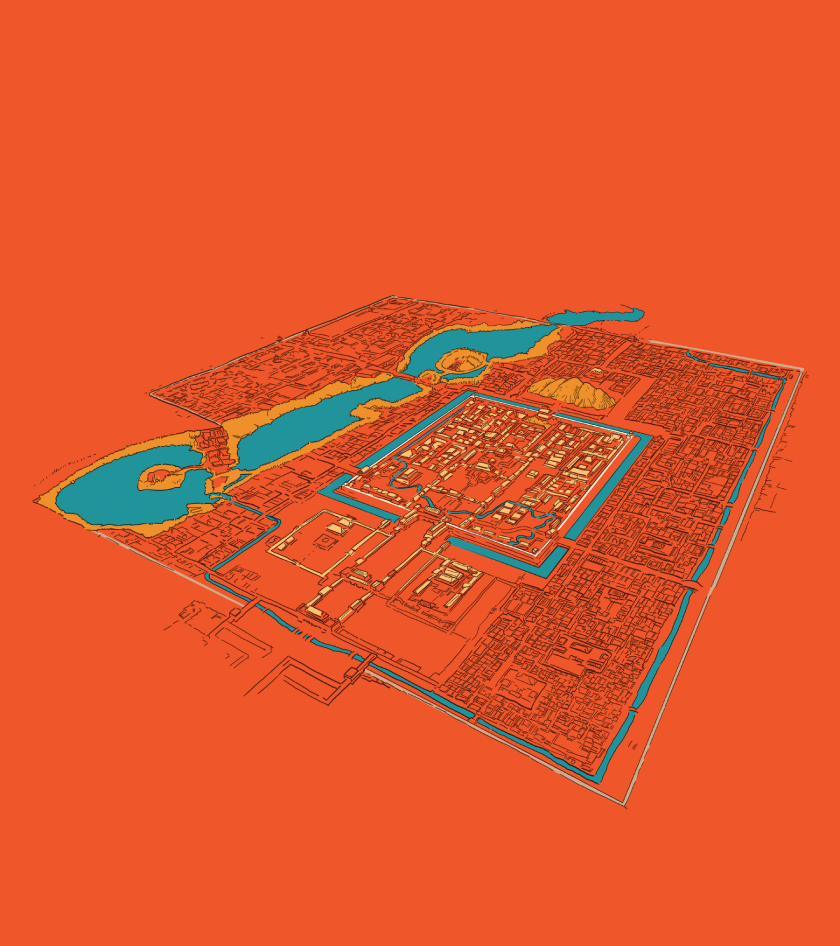Life inside the Forbidden City
chapter 2
How an army of eunuchs ran the Forbidden City
A PREVIOUS VERSION OF THIS GRAPHIC WAS PUBLISHED ON JULY 12, 2018. IT HAS BEEN UPDATED AND WAS REPUBLISHED ON OCTOBER 10, 2025.

Marcelo
Duhalde
The presence of eunuchs in the Chinese court was a long-standing tradition. These emasculated men served as palace menials, spies and harem watchdogs, with an army of eunuchs attached to the Forbidden City primarily to safeguard the imperial ladies’ chastity.
Confucian values deemed it vital for the emperor, as heaven’s representative, to produce a direct male heir to maintain harmony between heaven and Earth. Due to a high infant mortality rate, the world’s largest harem was placed at the emperor’s disposal to ensure enough male heirs would survive into adulthood.
History and facts
A 2,000-year system

The custom of keeping emasculated servants dates back to the eighth century BC, though historians place their formal appearance in court around Han Huan Di's reign (AD146-167). Their power grew over time, allowing them to exert influence on emperors and occasionally cause the fall of dynasties. This influence endured because of the secluded lifestyle of the emperor and the ambitions of consort families. The system was finally abolished on November 5, 1924, when the last emperor, Puyi, was driven from the Forbidden City.
REASONS TO BECOME A EUNUCH
Coercion
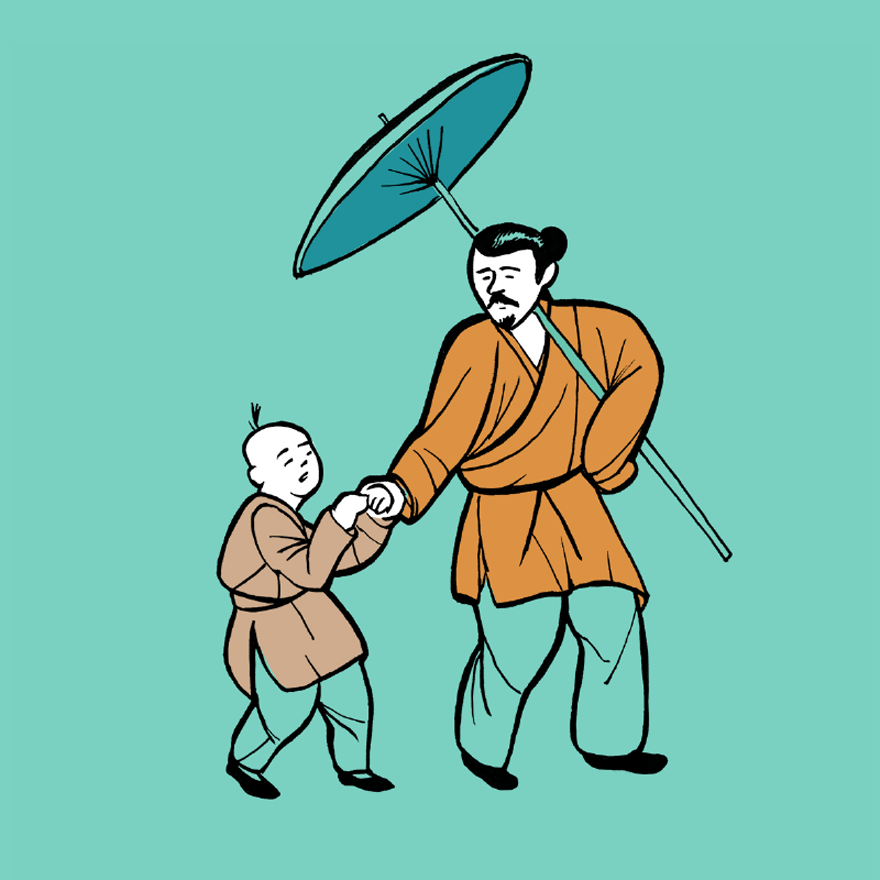 Families pushed young sons into service, hoping the boys would achieve a more prosperous life in the palace. Families would receive a cash reward for donating their children.
Families pushed young sons into service, hoping the boys would achieve a more prosperous life in the palace. Families would receive a cash reward for donating their children.
Poverty
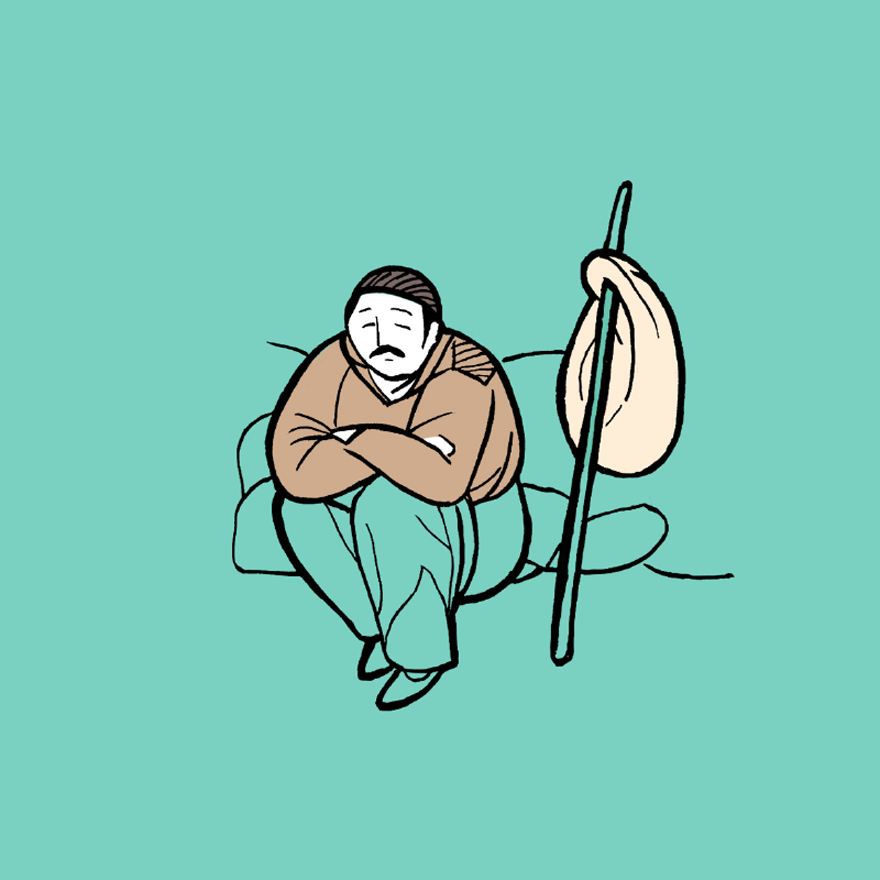 Some adults, lacking any honest economic means, chose emasculation as a better alternative to a life of begging or stealing.
Some adults, lacking any honest economic means, chose emasculation as a better alternative to a life of begging or stealing.
Free choice
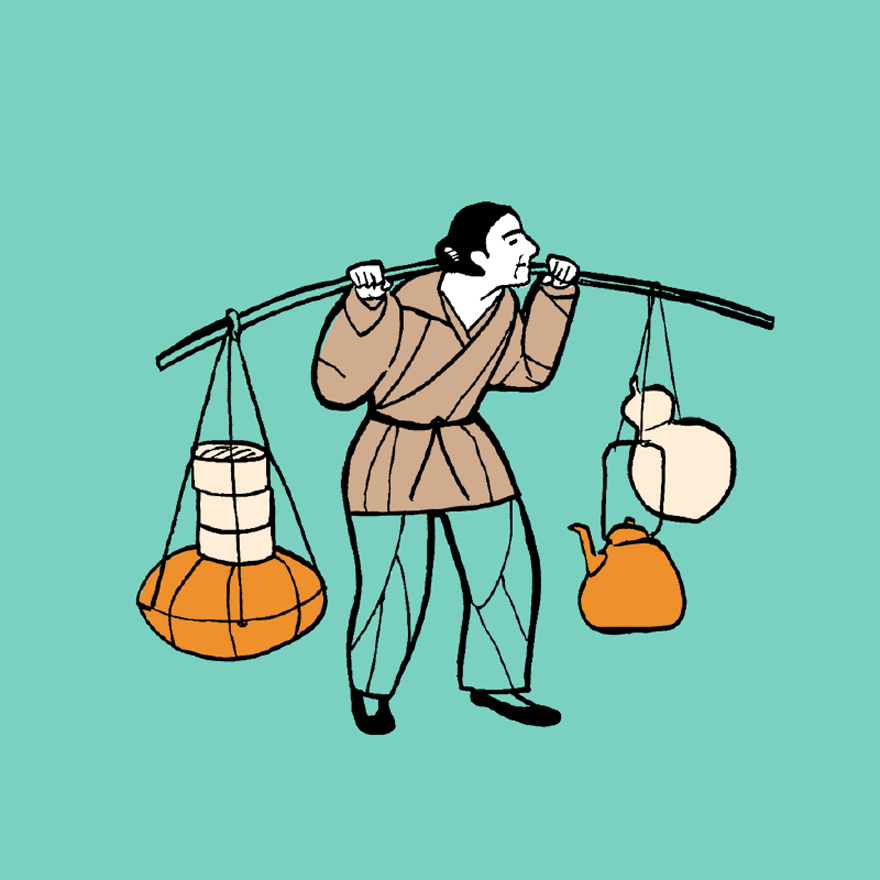 Men who envisioned only a future of hardship were often envious of the perceived comfortable and easy lifestyle enjoyed by palace eunuchs.
Men who envisioned only a future of hardship were often envious of the perceived comfortable and easy lifestyle enjoyed by palace eunuchs.
Punishment
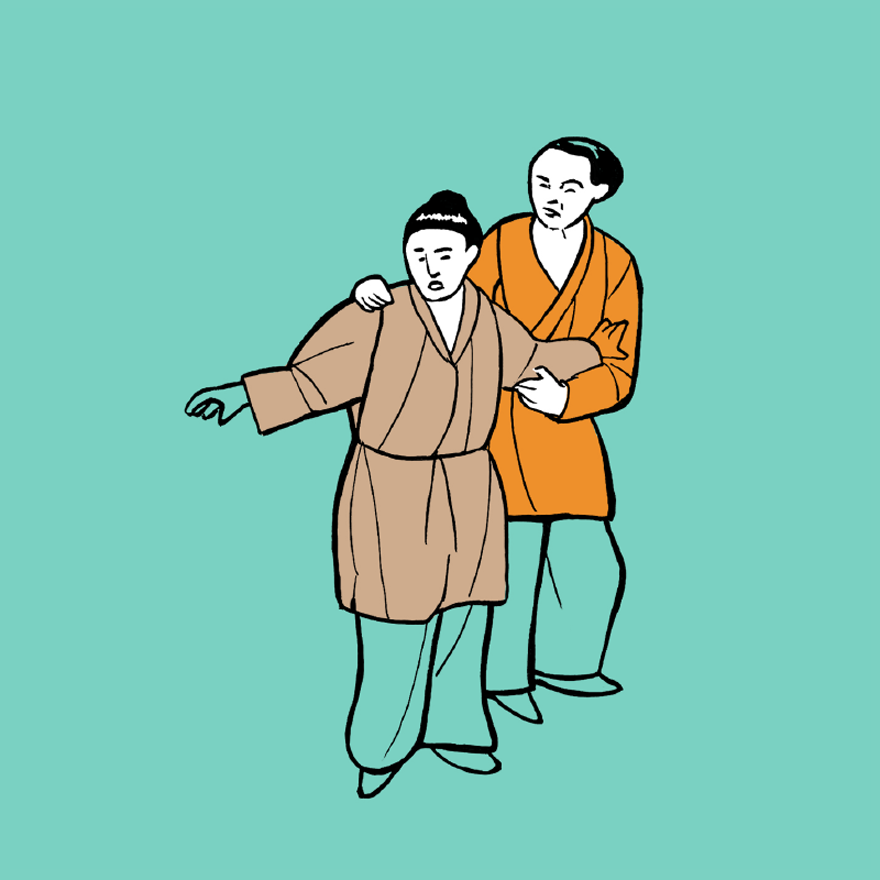 Historically, emperors like Guangwu of Han commuted death sentences to emasculation, a practise followed by successive emperors.
Historically, emperors like Guangwu of Han commuted death sentences to emasculation, a practise followed by successive emperors.
BAO OR TREASURE
The bao (“the three preciouses” - the testicles and penis) was sealed in a container and placed on a high shelf after the procedure.
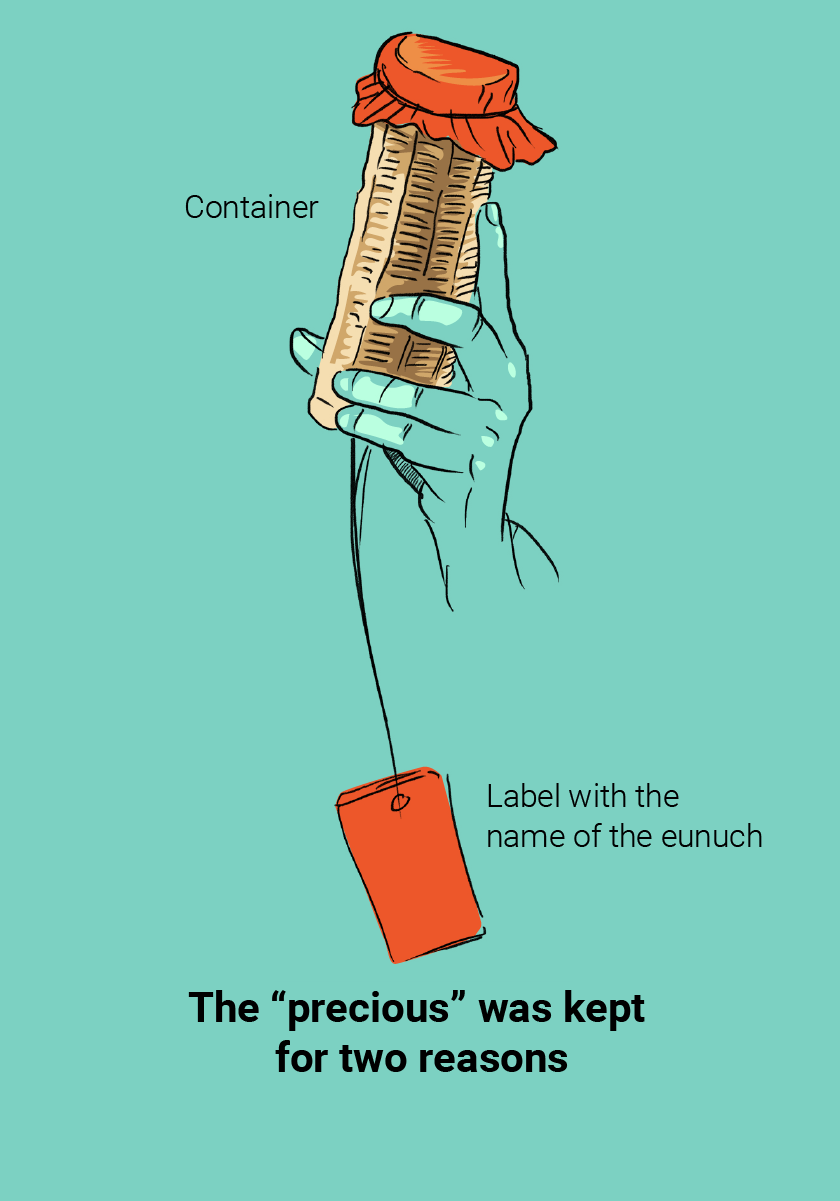
Promotion was impossible without passing an inspection with the bao. Careless eunuchs who failed to claim their bao after the operation often had to pay a high price to recover it, or resort to borrowing, purchasing or renting one.
Eunuchs were buried with their bao, believing it ensured their masculinity would be restored in the afterlife. Tradition warned that Jun Wang, the king of the underworld, would turn those buried without their bao into a female mule.
PHYSICAL CHANGES
Emasculation cut off the supply of male hormones to the body, leaving eunuchs with high voices. It also affected their bladder control, leading them to often wet their beds and clothes - the source of the old Chinese expression, “as smelly as a eunuch”. Furthermore, they were rendered too weak to perform strenuous physical activities.
According to G. Carter Stent’s 1877 article, “Chinese Eunuchs” emasculation also affected their character and could make eunuchs appear much older. They were vulnerable to bouts of extreme emotions, including moments of uncontrollable anger.
Labour
Duties and influence
Eunuchs were required to preserve the sanctity and secrecy surrounding the emperor. They performed duties in virtually every aspect of palace life: outdoors, they served as water-carriers, watchmen, chair-bearers, and gardeners; indoors, their roles included cooks and chamber, parlour, or scullery maids.
MANAGEMENT
The eunuch population swelled to 70,000 by 1644 (up from 10,000 in the 15th century), a surge largely driven by men seeking palace work through voluntary emasculation. However, fearing this excessive influence, the new Manchu-led Qing dynasty (1644-1911) began ruling by drastically reducing the number to just 3,000. To manage the remaining staff, the eunuch administration was divided into 48 specialised departments. This structure was highly hierarchical: each department had its own superintendent, all overseen by a chief eunuch, or general supervisor, whose office was usually ranked third grade.
In the late Qing dynasty, most eunuchs received a monthly salary of two to four silver taels. The highest pay was 12 taels, irrespective of rank. A silver tael was a traditional unit of weight in China (around 40 grams of silver) and served as a major form of currency.
EUNUCH AGENCIES
The imperial city surrounded the Forbidden City, serving as a vast administrative and maintenance hub for both the government and the imperial household. During the Ming dynasty, most eunuch agencies, where thousands of eunuchs lived and worked, were located within this imperial city. Because the offices of many Chinese court and civil officials were situated just outside the walls of the imperial city, this proximity led to many rivalries between the powerful eunuchs and the court ministers.
SPECIAL RESPONSIBILITIES
Eighteen lama priests, all eunuchs, attended to the spiritual welfare of the palace ladies and received a double allowance as salary. Vacancies were quickly filled by eunuchs with a spiritual vocation who wished to become priests.
A dramatic corps of 300 eunuchs was maintained solely to rehearse and perform for the palace females, as outsiders were forbidden to enter the Forbidden City. This troupe was controlled by a chief eunuch and lived in the Nan-fu, just outside the palace walls.
PUNISHMENT
Since eunuchs managed nearly every palace issue, their access to valuable information allowed them to wield significant power and influence, even over the emperor. Because eunuchs controlled all rites and protocols, their power constantly waxed and waned according to the strength of the reigning emperor's character.
In 1655, the Shunzhi Emperor issued the following decree: “The employment of eunuchs has been a tradition since ancient times. However, their abuses have often led to disastrous disturbances. They misappropriated power, intervened in government affairs, organised secret agents, murdered the innocent, commanded troops and brought their evil practices to the border regions. They even engaged in conspiratorial activities, framed those who were loyal and good, instigated factional struggles and encouraged fawning and flattery, until the affairs of state deteriorated day by day, and corruption occurred everywhere …
… From now on, anyone who is guilty of interfering with government affairs, misappropriating power, accepting bribes, involving himself in internal and external affairs, associating himself with Manchu and Han officials, reporting on things which are not his duty, or suggesting whether an official is good or bad, shall promptly be put to death, by slicing without mercy. This iron table is hereby erected so that it may be observed from generation to generation”.
Eunuchs were subjected to arbitrary punishments, which ranged from monetary fines to execution. Beatings were common, as was the sentence to cut grass, sometimes for life. The most frequent crime was desertion. If a eunuch ran away, his absence was immediately reported to a specialised police corps. This corps, whose members were not eunuchs themselves, was highly effective at tracking fugitives because they knew all the palace eunuchs. Escapes were rare, and the captured eunuch was always tried and punished upon his return.
DESERTION
First offence: Two months’ imprisonment, followed by 20 blows (beatings) before returning to duty.
Second offence: Two months confined in a cangue, after which he resumed his duties.
Third offence: Banishment to Moukden (now Shenyang) for 2½ years, followed by resumption of palace duties.
THEFT
Punishment for theft varied drastically based on the value of the item. Simple theft resulted in banishment to Moukden. However, if the stolen object was an imperial curio, jewelry or other valued prize of the emperor, the offender was taken to Chin-shan-k’ou (about 20km from Beijing) and beheaded.
MINOR OFFENCES
Laziness, neglect of duty, or other minor offences were punished by “bastinado”. This painful penalty consisted of being struck with a bamboo stick on the soles of the bare feet, with the culprit often receiving 80 to 100 blows.
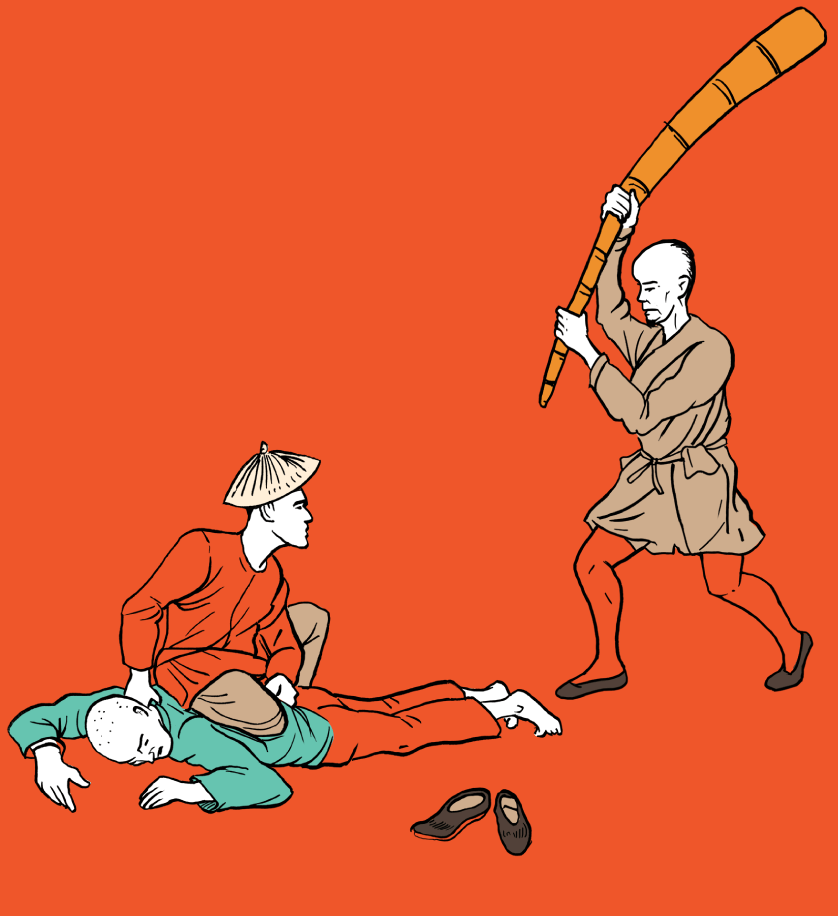
Following the initial punishment, the eunuch was sent to a doctor to have his wounds dressed. However, to render the punishment more severe, the eunuch was flogged again after three days - a brutal second session grimly referred to as “raising the scabs”.
FURTHER READING
We invite you to explore other chapters of this special Post presentation for a glimpse into a unique part of Chinese history.
The Palace Museum
By South China Morning Post graphics team
-
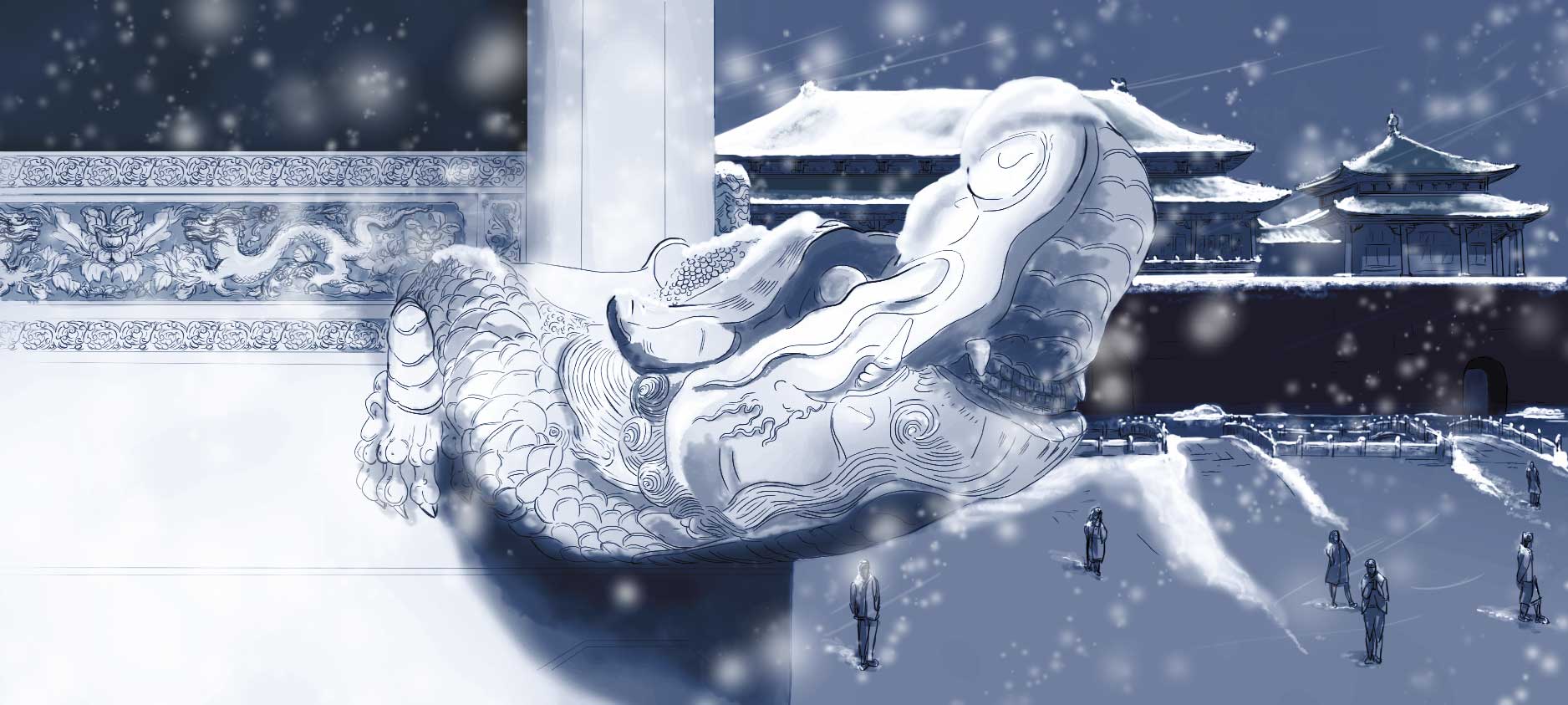
I
PARTThe Forbidden City’s unique architecture
By Marco Hernandez
-
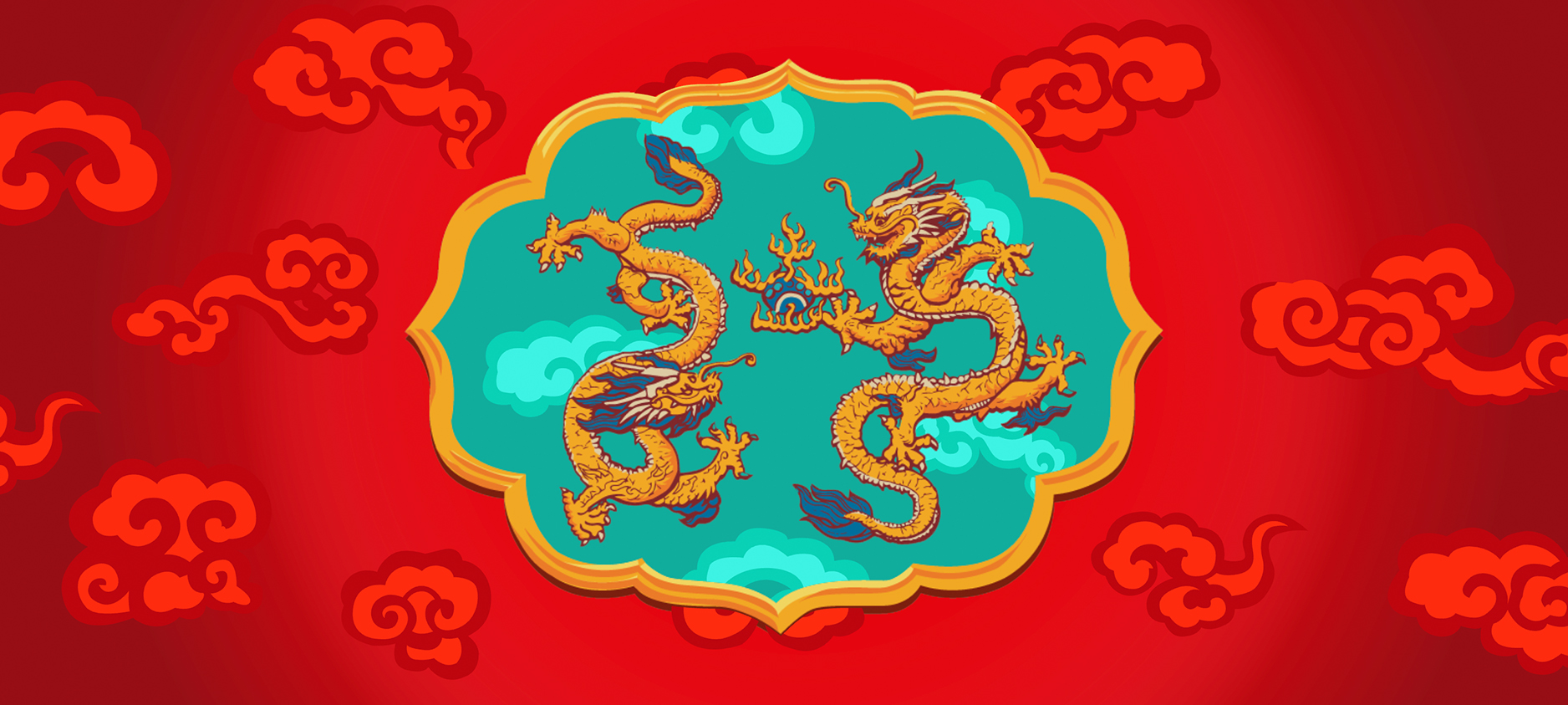
II
PARTLife inside the Forbidden City
By Marcelo Duhalde
-

III
PARTThe collection, the odyssey of the objects
By Adolfo Arranz















